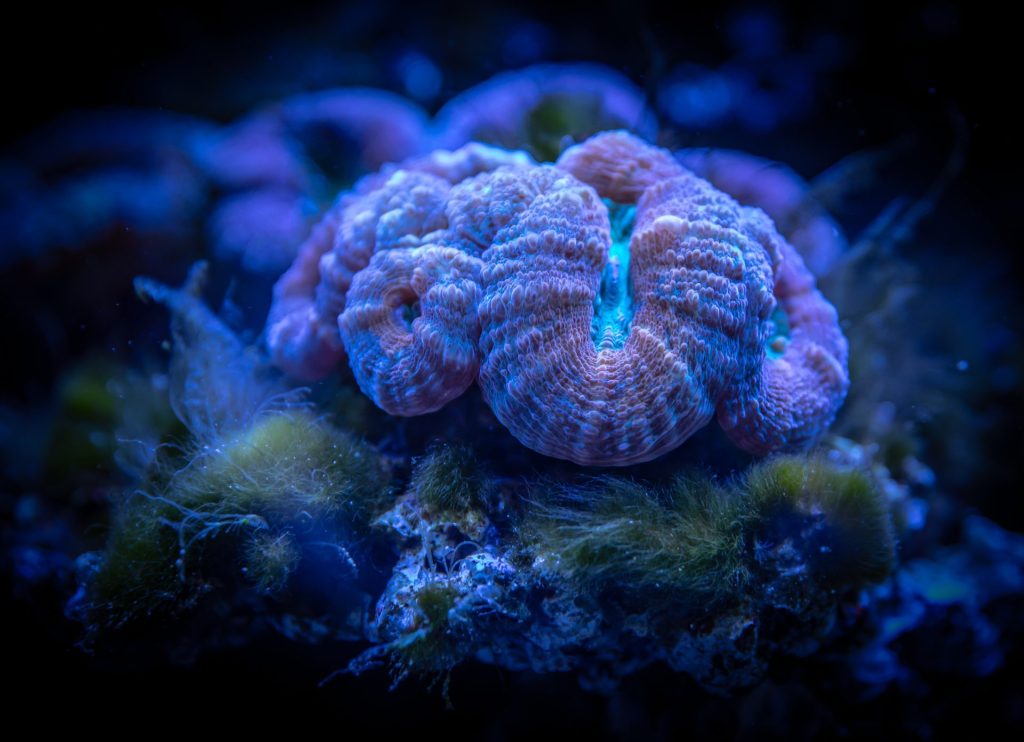 Algae are normal, and often necessary components of any aquatic ecosystem – they are far from being harmful. Algae growth only becomes a problem when it interferes with the aquariums aesthetic appearance or it begins to overtake delicate organisms.
Algae are normal, and often necessary components of any aquatic ecosystem – they are far from being harmful. Algae growth only becomes a problem when it interferes with the aquariums aesthetic appearance or it begins to overtake delicate organisms.
The most effective way to control problem algae is to control its food sources: nitrate, phosphate, carbon dioxide and dissolved organic matter. These nutrients are in short supply in natural environments such as tropical lakes, rivers and coral reefs. However, due to the aquarium’s closed system and density of organisms, nutrients can accumulate rapidly, forming a constant food source. Therefore understanding where these nutrients come from will help you control them.
Nitrate, phosphate and dissolved organics come from tap water, feeding the biological process. Some salt additive mixes also include these nutrients. Our goal is to manage the introduction of these food sources into the aquarium.
• Tap Water
Tap water in our area has measurable levels of nitrate, phosphate, silicate and heavy metals, all of which can promote algae growth and stunt the growth of desirable living plants, corals and invertebrates. Use of Reverse Osmosis (RO) water is the most efficient step in reducing the addition of these toxins. Just switching from tap water to RO water has resulted in cleaner aquariums with less maintenance for many aquarists. At Fintastic, we use RO water exclusively in all our saltwater systems and freshwater displays.
• Feeding
Ninety percent of the nitrogen in foods added to the aquarium ends up as nitrate in the water. Feeding also contributes to phosphate buildup. Overfeeding is typically the largest and most common source of algae nutrients. Feeding very small amounts twice a day (all food should be eaten within one minute) with no excess food laying on the bottom of the tank is your goal.
• The Biological Process
Mother Nature’s bacteria will reduce ammonia, nitrite and dissolved organics to nitrate. This process cannot be eliminated or altered as biological filtration is the most important type of filtration keeping your aquarium alive! Your goal is to keep organics levels as low as possible through proper feeding and husbandry of the aquarium. In saltwater, one of the newer methods is to eliminate the biological area in your trickle filter and follow the Berlin method. This process includes using plenty of live rock (2 pounds/gallon), live sand (3-4 inches deep), massive water flow, and strong protein skimming for filtration. Maintaining a calcium level of 400-450 ppm will promote the calcareous algae rather than the undesirable microalgae.
• Additions to the Aquarium
Additives for freshwater plant tanks (i.e. plant foods/fertilizers) should be done with test kits in hand to ensure the proper levels are maintained. Too little or too much will cause problems. Saltwater hobbyists should ensure their salt mix is nitrate/phosphate free and low in silicate. All other nutrient additives should be used very sparingly while other elements (calcium, strontium, molybdenum, iodine) should be consistently added.
• Lighting
Lighting problems can cause outbreaks of diatoms, red slime algae and blue-green slime algae. As lamps age, the light spectrum deteriorates, triggering the growth of undesirable algae. Fluorescent lamps (standard output) should be changed at least once a year, VHO lamps every four to six months, and metal halide and super compact lamps every year.
• Other Ways to Control Undesirable Algae
Once the introduction of nutrients is controlled, water changes incorporating vacuuming the detritus out of the gravel is the fastest way to remove the built-up impurities. Maintaining low levels can further be achieved by using nitrate and phosphate removing filter media. The addition of algae eating fish and snails is another natural way to keep the algae in check. Protein skimming is now considered a mandatory saltwater filtration component to reduce desolved organics. Ultraviolet (UV) sterilization will also kill free-floating algae spores. UV sterilization works effectively with freshwater and saltwater aquariums and ponds.
